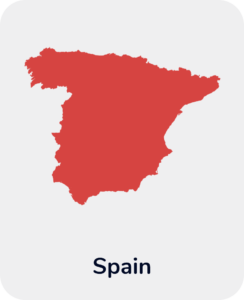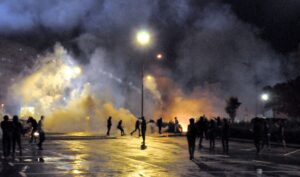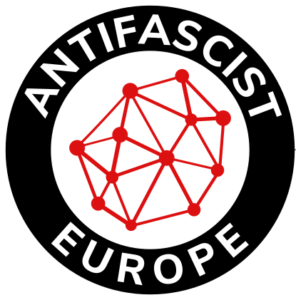By Kostis Papaioannou, who is a teacher. He has been president of the Greek section of Amnesty International, president of the National Commission for Human Rights and Secretary General for Human Rights. Co-founder of the Racist Violence Recording Network, coordinator of the Golden Dawn Watch and he is the director of Simeio.
The Italian historian Enzo Traverso defines post-fascism as the contemporary form of the fascist phenomenon: an ongoing phenomenon with continuities (legacies of classic fascism) and ruptures (loose ideology, a mixture of populism and xenophobia). In Europe, the new post-fascist nationalism no longer targets – as it did in the 1930s – other nations, and in particular European nations, but rather immigration and Islam. Populist demagogues are seizing power with a bigoted agenda. Xenophobic, nationalist and racist parties are being reinforced.
This is not the traditional far right as we know it; it is not unified. It differs from country to country, from party to party, from person to person. Sometimes they are “anti-systemic” and radical, sometimes they are institutionalised. They have become spokespersons for widespread discontent, anger and frustration. We often witness the normalisation of the far right. Many have abandoned antisemitism, becoming guardians of Christian Europe and of a homeland “threatened” by Islam. Of course, the callous far right, neo-Nazis and fascists have not ceased to exist. The new far right is constantly readapting. It takes shape according to its time and the culture to which it belongs: The American alt-right speaks against African and Hispanic Americans and in favour of religion. The Western European alt-right speaks in favour of the secular state and the rights of women and LGBTI people and against Muslims. The Eastern European one is closer to the roots of interwar fascism and Christian antisemitism.
Post-fascism today does not threaten to directly and violently overthrow the fundamental principles of parliamentary democracy. It prefers to erode them. It promotes authoritarian, illiberal democracy. A polity that is typically still called a democracy but in which the elected government undermines or nullifies institutions. It is not a single-party system, nor is it a multiparty democracy, but rather a captive democracy. Governments limit the independence of the judiciary, control or silence the media, restrict the freedom of citizens to participate in public life, to unionise, to oppose. Marches and demonstrations are dealt with as if they were illegal acts. Political and nongovernmental organisations are banned for allegedly acting anti-nationally. An exceptional circumstance, refugee flows or a health crisis are exploited to impose restrictions on the exercise of rights.
Hostility towards universal citizenship remains a core characteristic of the new far-right. It has always been present, along with hostility towards anything that oversteps the narrow boundaries of one’s nation. It can exist in parallel to elections and representative democracy. This new authoritarianism retains the basic features of 20th-century fascism. It is anti-liberal, anti-egalitarian, intolerant and sometimes violent. It strengthens non-inclusive democracy which increasingly tends towards exclusion. By speaking the language of the excluded, it pits one excluded person against another. It addresses the impoverished and shows them the enemy: it is the immigrants. In Europe and America, post-fascism is above all anti-immigrant.
The new far-right does not always give the fascist salute, it does not always wear military uniforms. It may deny fascism and Nazism. This far-right is sort of casual, domesticated. Its communication skills are often charismatic. Its discourse is penetrating, concise, edged. It is sharp, sometimes unbridled, its rhetoric becoming extremely aggressive, toxic, turning into hate speech. Young right-wing extremists may easily say what a democrat may not. They provide simplistic answers to complex questions. They point to enemies who are responsible for the ills of the world: bankers (the term often carries an antisemitic connotation) are to blame for the crisis, foreigners for unemployment, immigrants for criminality.
They will say almost anything to persuade others that they have nothing to do with fascism. “We are not fascists, Islam is fascism”, “We are not fascists because we are pro-Jewish”, “We defend Christian traditions”, “We are not in favour of violence” and “We are the anti-fascists!”. During the Covid-19 pandemic, in the name of freedom of choice and alleged free thought, the far-right has expressed irrationality, a hatred of institutions and doubt in science. This rhetoric is attractive to those defeated by neoliberal globalisation because it brings with it a severe anti-systemic stigma, it speaks of identities under threat, it questions the truth that is centrally imposed. In many countries the elites, whether political, intellectual or media, have succumbed to the temptation to claim the monopoly of rationality, by targeting those who express unscientific views. Nevertheless, by hurling accusations of populism, by stigmatising the “feeble-minded”, we confirm the far-right narrative. The rise of right-wing populism in Europe is a self-fulfilling prophecy. This was also evident with the coronavirus. In many countries, political leaders are taking the opportunity to curtail freedoms. However, surveillance, curfews and mass vaccination also fuel conspiracy theories. Irrationality is being reinforced, and this in the name of freedom and supposed self-determination.
The new authoritarianism is related to the decline of participatory democracy and the rise of “post-democracy”. Democratic processes typically work but the real power is reduced to increasingly small, shady elites who are not accountable to anyone. The crisis of credibility of political forces and traditional media is causing distrust and generalised doubt. The weak welfare state, unemployment or flexible and undeclared work cause insecurity, fear and anger. The far-right exploit the crisis of the left, utilises its own heritage, presents itself as the protector of social rights.
At the same time, it appropriates the respect for difference. Against any minority demanding respect for its identity, the far-right places an insecure majority that feels overlooked. Are some people claiming rights for refugees and immigrants? The far-right knows that the dominant identity is the national/cultural one, and divides between “us” and “others”. It shouts “Greeks, French, Germans first” and accuses the left that “you only care about refugees”. The far-right addresses the majority. It exploits the poverty and inequalities generated by neoliberal capitalism but does not disagree with policies that generate extreme poverty. It focuses on the threat of cultural alteration. To people who feel that they no longer have a clear social identity, post-fascism says that their only privilege is the most common one, that they were born in the same country. This is the beginning of nationalism. The return of post-fascism to its early 20th-century origins.







